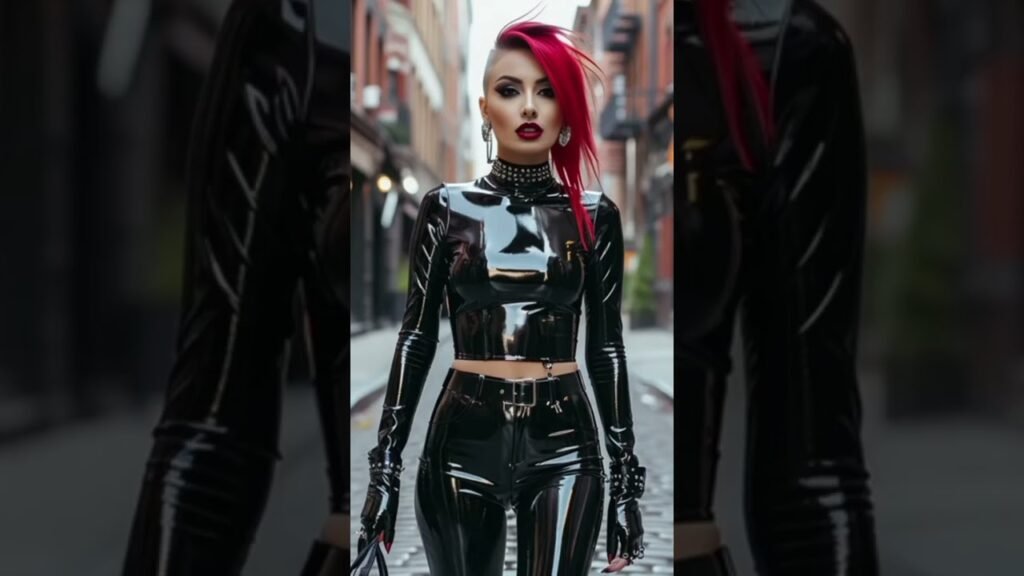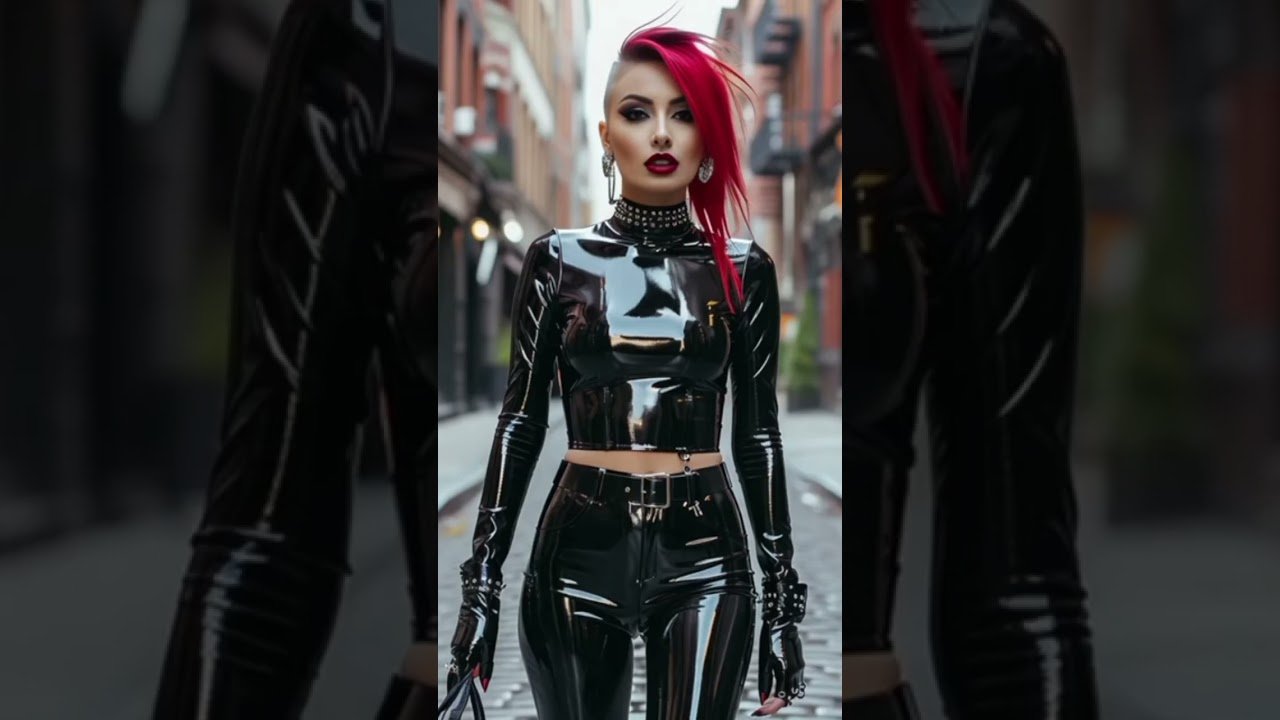Step into a world where fashion boldly strides into the future, leaving traditional trends behind. “Goodbye Fashion Trends: The Future of Fashion” takes you on a journey through the evolving landscape of style and creativity. Discover how technology is shaping the way we express ourselves, with AI-driven art at the forefront. This isn’t just about clothes; it’s about redefining what it means to be fashionable in a rapidly changing world.
Join this vibrant community and be part of something extraordinary. Exclusive content awaits you, from members-only videos to behind-the-scenes insights that give you an edge in understanding the future of style. Your engagement means everything, so remember to support this innovative channel by sharing, liking, and leaving a comment. Together, you can shape the fashion narrative of tomorrow.

This image is property of i.ytimg.com.
The Changing Landscape of Fashion
Fashion, like an ever-flowing river, has been shaped by the world around it, transforming continuously over the ages. Today, you find yourself in a time where the landscape of fashion is as dynamic as ever, sparked by historical shifts, technological advancements, and cultural revolutions.
Historical Context of Fashion Trends
As you look back through history, you’ll notice that fashion trends were often dictated by royalty and social elites. Think of the corsets of the Victorian era or the flapper dresses of the 1920s. Each era had its signature, symbolizing not just style, but also the social norms and values of the time. Trends spread slowly, primarily through word of mouth, physical gatherings, and later, through print media. Fashion was as much about reinforcing societal status as it was about personal expression.
Impact of Globalization on Fashion
Fast forward to today, and globalization has thrown open the gates to a world of fashion choices. No longer confined to geographical barriers, you have access to fashion from every corner of the globe. Brands from Paris to Tokyo are just a click away, and trends have become more of a worldwide conversation. The fusion of different cultures has enriched fashion, bringing diverse styles into the mainstream and making the global fashion landscape more vibrant, yet also more homogenized in certain aspects.
The Decline of Fashion Trends
While once, you might have seen fashion trends as a unifying force, helping groups identify themselves through shared styles, there has been a noticeable shift away from these trends.
Reasons for the Shift Away from Trends
The shift away from traditional fashion trends can be attributed to a variety of reasons. Increased awareness about sustainability and a growing critique of the excesses of fast fashion have made you, as a consumer, more cautious. The democratization of fashion through social media has also played a role. Now, instead of following a single path set by fashion leaders, you’re more inclined to create your own, seeking out pieces that speak to you personally rather than merely following the crowd.
Cultural Implications of Declining Trends
With this shift, cultural implications become quite profound. The decline of collective fashion trends has led to a broader acceptance of diversity in styles. You now live in a world that celebrates individuality, where what you wear is more about your own identity than fitting in with societal expectations. This change is fostering a culture of acceptance, where differences are valued rather than suppressed.
The Rise of Individualism in Fashion
This new wave of individualism in fashion has opened doors for personal expression. It’s an exciting time, where you, your choices, and your voice take center stage.
Personal Expression Through Clothing
In this empowered world of fashion, clothing has become a powerful medium for self-expression. You can use your wardrobe to tell your story, to make statements about your beliefs, tastes, and even moods. Fashion is flexible, and it allows you to experiment freely, mix styles, and create looks that are uniquely yours. This personal expression through clothing fosters authenticity, making every outfit a canvas on which you express who you are.
The Role of Social Media in Promoting Individual Styles
Social media platforms have revolutionized how fashion is consumed and shared. They have become a crucial tool for showcasing individual styles. You might find yourself scrolling through Instagram, Pinterest, or TikTok, discovering unique fashion inspirations from people all over the world. These platforms allow for immediate reflection and endless variety, where your style can be celebrated, replicated, or evolved by communities small and large. You, as part of this network, contribute to the changing paradigm, where individual style takes precedence over imposed trends.
Sustainability and Ethical Fashion
As the fashion industry evolves, there is a growing emphasis on sustainability and ethics, shaping the way you perceive and consume fashion.
The Importance of Sustainable Practices
Sustainable fashion isn’t just a buzzword—it’s a necessary shift towards more responsible consumption. You might increasingly find yourself gravitating towards brands that emphasize eco-friendly practices, such as using organic materials, recycling, and reducing waste. Sustainable fashion is about taking responsibility for the environmental impact of your choices and advocating for a future where fashion and the planet coexist harmoniously.
Ethical Consumerism and its Impact on the Fashion Industry
Ethical consumerism has brought about a powerful change in the industry. As you become more aware of the conditions in which garments are produced, the demand for transparency and fair treatment of workers has intensified. This awareness has pushed brands to prioritize ethical practices and rethink their supply chains. In doing so, you’re helping to build a more sustainable, humane industry, where the focus is not only on aesthetics but also on the welfare of those who craft the clothes you wear.
Technological Innovations in Fashion
Technology continues to be a transformative force in fashion, offering new possibilities and changing how fashion is conceptualized, created, and experienced.
AI and Machine Learning in Fashion Design
Artificial Intelligence (AI) and Machine Learning are no longer just futuristic concepts. They are at the forefront of fashion design innovation. Through these technologies, you can generate designs, forecast trends, and even personalize shopping experiences based on your preferences. Designers use AI to push creative boundaries, resulting in visionary pieces that are both functional and aesthetically pleasing. You’re stepping into an era where fashion is not only crafted by hands but also sculpted by algorithms.
3D Printing and Customizable Fashion
3D printing has introduced an exciting frontier in customizable fashion. It allows for incredible precision and innovation in design. Imagine having the power to create bespoke garments tailored perfectly to your body shape and style preferences. This technology not only minimizes waste—by using resources more efficiently—but also democratizes fashion, putting the design process in the hands of the people, including you.
Virtual and Augmented Reality in Fashion
Virtual and augmented reality technologies are reshaping the fashion landscape, offering immersive experiences that redefine your interaction with fashion.
Virtual Fashion Shows and Digital Clothing
Virtual fashion shows have emerged as a groundbreaking shift in the way fashion is presented. They eliminate geographical barriers, allowing you to attend shows from anywhere in the world. Digital clothing, meanwhile, offers an innovative way to express style without physical consumption, providing a sustainable option for fashion exploration that doesn’t contribute to waste.
Augmented Reality in Retail Experiences
Augmented reality (AR) brings an interactive element to shopping, enhancing the retail experience by bridging the gap between online and physical environments. Imagine trying on outfits virtually or exploring how a garment might look in a variety of settings—all from the comfort of your home. AR enables you to make informed purchasing decisions, offering a fusion of convenience and innovation that transforms the way you shop.
The Role of AI Art in Fashion
AI art is making waves in the fashion industry, offering fresh creative inputs and challenging traditional design paradigms.
AI-Generated Designs
AI-generated designs provide a new artistic medium, where creativity and technology intersect. These designs can be surreal and unexpected, stretching the boundaries of human imagination. For you, this means access to innovative and avant-garde fashion pieces that reflect a blend of art and algorithm.
Collaborations Between AI and Designers
Collaborations between AI and designers are pushing the envelope in fashion innovation. Artists and fashion houses are partnering with AI to create unique designs, merging human creativity with machine precision. Such synergies result in groundbreaking collections that emphasize the limitless potential of technology, offering you a glimpse into the future of fashion.
Community-Driven Fashion
Community-driven fashion emphasizes collaboration and collective creativity, giving you a stake in the fashion world.
The Rise of Fashion Communities
Fashion communities have risen to prominence, driven by shared passions and ethical considerations. These communities value transparency, inclusivity, and collaboration, where you can share, learn, and even co-create fashion with others who have similar values and interests.
Crowdsourced Fashion Design
Crowdsourced fashion design has democratized the creative process, offering everyone a voice in design. Brands that engage with consumers to crowdsource ideas introduce designs that resonate with real people’s needs and desires. This approach empowers you as a consumer, involving you directly in the creative journey of the clothes you wear.
The Future of Fashion Media
As fashion evolves, so too does the way it’s discussed and disseminated. You’re part of a transformation in fashion media, where traditional barriers are broken down in favor of new voices and perspectives.
The Decline of Traditional Fashion Magazines
With the rise of digital media, traditional fashion magazines have seen a decline. While they once held a monopoly over fashion news and trends, the vast digital landscape offers you instant access to content that suits your tastes and perspectives. This shift marks a movement towards more personalized and diverse narratives in fashion.
The Role of Influencers and Content Creators in Fashion
Influencers and content creators now play a pivotal role in shaping fashion discourse. They offer authentic voices and fresh perspectives, often showcasing everyday style over haute couture. By following these creators, you support a dynamic, real-world perspective on fashion that values diversity and ingenuity.
Conclusion
As you navigate the ever-changing fashion realm, you’ll find yourself at the heart of an industry defined by creativity and innovation. From embracing individualism to advocating for sustainability, fashion is as much about personal values as it is about style.
Summary of Key Points
The landscape of fashion is evolving, influenced by historical contexts, globalization, individualism, and technology. You’re witnessing a decline in traditional trends, replaced by a heightened focus on personal expression and sustainable practices. Technological advancements, such as AI and 3D printing, are reshaping design, while virtual experiences redefine interaction with fashion. Community-driven inspirations and new media dynamics highlight fashion’s collaborative essence.
Future Predictions for the Fashion Industry
Looking ahead, the fashion industry promises to be even more inclusive, sustainable, and technologically driven. You’ll likely see further integration of AI in design, increased focus on ethical practices, and augmented reality shaping retail experiences. As the industry leans toward personalized and community-oriented approaches, your role in shaping fashion narratives becomes more significant than ever before. Through this journey, remember that fashion, in all its forms, is a celebration of identity, creativity, and change.
